RME FIREFACE UFX II
RME USB Premium Flagship Interface
The unique Fireface UFX II is the premier solution to transfer analog and digital audio data directly to a computer from practically any source.
Numerous unique features, well thought-out configuration dialogs, an industry-leading mixing engine and monitoring solution, professional DSP effects and class-leading analog circuits with latest digital converters put the Fireface UFX II at the very top of the range of computer-based audio interfaces.
The first choice of Audio Professionals around the World
With exceptional flexibility and compatibility, the inclusion of DURec (Direct USB Recording), and RME’s famous low latency hardware and driver designs, the Fireface UFX II delivers a rich feature set that will appeal to users in both high end home studios and commercial audio production facilities.
With capacity for 60 audio channels (30 input and 30 output), support for sampling frequencies upward of 192 kHz, and the flexibility provided by USB connectivity, the new Fireface UFX II is an ideal solution to a wide range of recording, mixing, and monitoring applications.
The Fireface UFX II offers excellent flexibility that enables the interface to fit seamlessly into a myriad of production environments. Analog, ADAT, AES, SPDIF, and USB 2 are all standard on the Fireface UFX II. Equally impressive is the unit’s channel count: 12 analog, 16 ADAT, and 2 AES for 30 channels input and 30 channels output. Further, with support for USB 2 connectivity, the new Fireface UFX II can integrate with RME’s optional ARC USB remote controller.
RME’s Fireface UFX II incorporates premium AD/DA converters, optimized analog I/O circuits, as well as improved SNR and THD values to guarantee pristine, crystal clear and transparent audio. A new PAD-free mic circuit design with +18 dBu maximum input level and 75 dB gain range provides trouble-free operation for the most demanding recording environments.
Further, new low impedance, high power phones outputs (2 Ohms) with +19 dBu maximum output level provide ample output power and volume on any headphones – high or low impedance.
Flexible Routing & Mixing with TotalMix FX
Since 2001, TotalMix has added unlimited routing and mixing to RME audio interfaces. Its unique capability to create as many independent submixes as output channels available, turned it into the most flexible and powerful mixer of its kind.
With supported hardware, TotalMix FX includes a complete effects system, which not only adds flexibility to the recording chain, but also makes latency saddled software solutions obsolete.
TotalMix FX can completely replace an external mixer, enabling the creation of multiple latency-free monitor mixes with EQ, Dynamics, Reverb and Delay for any outputs, incl. main monitors and headphone mixes for musicians.
DC-Coupled Outputs – CV/Gate Voltage Control
Most audio interfaces are traditionally designed with what is called ‘AC-coupled outputs’, where capacitors are used to filter out any extreme low frequencies.
Whilst these frequencies are generally considered undesirable for audio – eating into headroom and potentially causing damage to other equipment – one instance where DC-coupling remains desirable is the world of modular synthesizers, where static or slow-moving signals are used for control over various parameters such as pitch note values or LFOs.
All of the Fireface UFX II’s line-level outputs are fully DC-coupled, allowing for the sending of control voltages (CV) or Gate information to modular synthesizers (such as the popular Eurorack and Moog/MOTM/Synthesizers formats) and other studio hardware.
TotalMix FX for iPad™ App
TotalMix FX for iPad™ adds full control over hardware mixer and DSP effects for Fireface UFX+, UFX II, UCX, 802, Babyface, Babyface Pro and MADIface Pro when in Class Compliant Mode, and lets you create, store and load complete mixes directly from the iPad™
ANALOG
AD, Line In 1-8, rear
- Input: 6.3 mm TRS, electronically balanced
- Signal to Noise ratio (SNR) @ LoGain: 116 dB (AES17), 118 dBA
- Signal to Noise ratio (SNR) @ +4 dBu: 115 dB (AES17), 117 dBA
- Frequency response @ 44.1 kHz, -0.1 dB: 8.9 Hz – 20.4 kHz
- Frequency response @ 96 kHz, -0.5 dB: 4.3 Hz – 45.2 kHz
- Frequency response @ 192 kHz, -1 dB: 3 Hz – 89 kHz
- Filter: Short Delay Sharp, 5 / 5 / 6 samples delay
- THD @ -1 dBFS: < -120 dB, < 0.0001 %
- THD+N @ -1 dBFS: < -110 dB, < 0.00032 %
- Channel separation: > 110 dB
- Maximum input level: +19 dBu
- Input: 6.3 mm TRS jack, electronically balanced
- Input impedance @ 1 kHz: 10 kOhm unbalanced, 10.6 kOhm balanced
- Input sensitivity switchable between Lo Gain and +4 dBu
- Input level for 0 dBFS @ Lo Gain: +19 dBu
- Input level for 0 dBFS @ +4 dBu: +13 dBu
- Variable digital gain: 0 to +12 dB
- Minimum level for 0 dBFS: +1 dBu, -1.2 dBV
Microphone In 9-12, front
As AD, but:
- Input: XLR, electronically balanced
- Input impedance @ 1 kHz: 3.4 kOhm
- Signal to Noise ratio (SNR) @ 0 dB Gain: 117 dB (AES17), 119.5 dBA
- THD+N @ -1 dBFS, Gain 20 dB: < -110 dB, < 0.00032 %
- Frequency response @ 44.1 kHz, -0.1 dB: 10.7 Hz – 20.3 kHz
- Frequency response @ 96 kHz, -0.5 dB: 5.1 Hz – 45.0 kHz
- Frequency response @ 192 kHz, -1 dB: 3.5 Hz – 88 kHz
- EIN @ 60 dB Gain, 150 Ohm, A-Weighted: -129.8 dBu
- Gain range: 75 dB
- Maximum input level, Gain 0 dB: +18 dBu
- Maximum input level, Gain 75 dB: -57 dBu
- CLIP LED: 0 dBFS
- SIG LED: -60 dBFS
Instrument In 9-12, front
As AD, but:
- Output: 6.3 mm TRS jack, servo-balanced
- Signal to Noise ratio (SNR) @ HiGain: 116.5 dB (AES17), 118.5 dBA
- Signal to Noise ratio (SNR) @ +4 dBu: 116 dB (AES17), 118 dBA
- Signal to Noise ratio (SNR) @ -10 dBV: 107 dB (AES17), 109 dBA
- Frequency response @ 44.1 kHz, -0.1 dB: 0 Hz – 20.2 kHz
- Frequency response @ 96 kHz, -0.5 dB: 0 Hz – 44.6 kHz
- Frequency response @ 192 kHz, -1 dB: 0 Hz – 77.5 kHz
- THD+N: < -110 dB, < 0.00032 %
- Channel separation: > 110 dB
- Output level switchable Hi Gain, +4 dBu, -10 dBV
- Output level at 0 dBFS @ Hi Gain: +19 dBu
- Output level at 0 dBFS @ +4 dBu: +13 dBu
- Output level at 0 dBFS @ -10 dBV: +2 dBV (+4.2 dBu)
- Output impedance: 75 Ohm
DA, Line Out 3-8, rear
- Resolution: 24 bit
- Dynamic range (DR): 115 dB RMS unweighted, 118 dBA
- Frequency response @ 44.1 kHz, -0.5 dB: 5 Hz – 20.8 kHz
- Frequency response @ 96 kHz, -0.5 dB: 5 Hz – 45 kHz
- Frequency response @ 192 kHz, -1 dB: 5 Hz – 89 kHz
- THD: < -110 dB, < 0.00032 %
- THD+N: < -104 dB, < 0.00063 %
- Channel separation: > 110 dB
- Maximum output level: +19 dBu
- Output: 6.3 mm TRS jack, servo-balanced
- Output impedance: 75 Ohm unbalanced, 150 Ohm balanced
- Output level switchable Hi Gain, +4 dBu, -10 dBV
- Output level at 0 dBFS @ Hi Gain: +19 dBu
- Output level at 0 dBFS @ +4 dBu: +13 dBu
- Output level at 0 dBFS @ -10 dBV: +2 dBV
DA – Stereo Monitor Output XLR (1-2)
As DA, but:
- Output: XLR, balanced
- Output level switchable 24 dBu, Hi Gain, +4 dBu, -10 dBV
- Output level at 0 dBFS @ 24 dBu: +24 dBu
- Output level at 0 dBFS @ Hi Gain: +19 dBu
- Output level at 0 dBFS @ +4 dBu: +13 dBu
- Output level at 0 dBFS @ -10 dBV: +2 dBV
- Output impedance: 150 Ohm
DA – Stereo Monitor Output Phones (9-12)
As DA, but:
- Output: 2 x 6.3 mm TRS stereo jack, unbalanced
- Maximum output level at 0 dBFS, High: +19 dBu
- Maximum output level at 0 dBFS, Low: +2 dBV
- Max power per channel @ 32 Ohm load, 0.02% THD: 200 mW (2.5 Vrms, +10 dBu)
- Signal to Noise ratio (SNR) @ High: 116.5 dB (AES17), 118.5 dBA
- Signal to Noise ratio (SNR) @ Low: 115 dB (AES17), 117 dBA
- Output impedance: 2 Ohm
MIDI
- 2 x MIDI I/O via 5-pin DIN jacks
- Galvanically isolated by optocoupled input
- Hi-speed mode: Jitter and response time typically below 1 ms
- Separate 128 byte FIFOs for input and output
DIGITAL
- Clocks: Internal, ADAT, AES, MADI, word clock
- Low Jitter Design: < 1 ns in PLL mode, all inputs
- Internal clock: 800 ps Jitter, Random Spread Spectrum
- Jitter suppression of external clocks: > 30 dB (2.4 kHz)
- Effective clock jitter influence on AD and DA conversion: near zero
- PLL ensures zero dropout, even at more than 100 ns jitter
- Digital Bitclock PLL for trouble-free varispeed ADAT operation
- Supported sample rates: 28 kHz up to 200 kHz
DIGITAL INPUTS
AES/EBU
- 1 x XLR, transformer-balanced, galvanically isolated, according to AES3-1992
- High-sensitivity input stage (< 0.3 Vpp)
- SPDIF compatible (IEC 60958)
- Accepts Consumer and Professional format
- Lock range: 27 kHz – 200 kHz
- Jitter when synced to input signal: < 1 ns
- Jitter suppression: > 30 dB (2.4 kHz)
ADAT Optical
- 2 x TOSLINK, format according to Alesis specification
- Standard: 2 x 8 channels 24 bit, up to 48 kHz
- Double Speed (S/MUX): 2 x 4 channels 24 bit 96 kHz
- Quad Speed (S/MUX4): 2 x 2 channels 24 bit 192 kHz
- Bitclock PLL ensures perfect synchronisation even in varispeed operation
- Lock range: 31.5 kHz – 50 kHz
- Jitter suppression: > 30 dB (2.4 kHz)
SPDIF optical (ADAT2)
- 1 x optical, according to IEC 60958
- Accepts Consumer and Professional format
- Lock range: 27 kHz – 200 kHz
- Jitter suppression: > 30 dB (2.4 kHz)
Word Clock
- BNC
- Internal termination 75 Ohm switchable
- Automatic Double/Quad Speed detection and internal conversion to Single Speed
- SteadyClock guarantees super low jitter synchronization even in varispeed operation
- Not affected by DC-offsets within the network
- Signal Adaptation Circuit: signal refresh through auto-center and hysteresis
- Overvoltage protection
- Level range: 1.0 Vpp – 5.6 Vpp
- Lock Range: 27 kHz – 200 kHz
- Jitter when synced to input signal: < 1 ns
- Jitter suppression: > 30 dB (2.4 kHz)
DIGITAL OUTPUTS
AES/EBU
- XLR, transformer-balanced, galvanically isolated, according to AES3-1992
- Output level Professional 4.5 Vpp, Consumer 2.6 Vpp
- Format Professional according to AES3-1992 Amendment 4
- Format Consumer (SPDIF) according to IEC 60958
- Single Wire mode, sample rate 28 kHz up to 200 kHz
ADAT
- 2 x TOSLINK
- Standard: 2 x 8 channels 24 bit, up to 48 kHz
- Double Speed (S/MUX): 2 x 4 channels 24 bit 96 kHz
- Quad Speed (S/MUX4): 2 x 2 channels 24 bit 192 kHz
SPDIF optical (ADAT2)
- Format Consumer (SPDIF) according to IEC 60958
- Sample rate 28 kHz up to 200 kHz
Word Clock
- BNC
- Max. output voltage: 5 Vpp
- Output voltage @ 75 Ohm termination: 4.0 Vpp
- Output impedance: 10 Ohm
- Frequency range: 27 kHz – 200 kHz
GENERAL
- Power supply: Internal switching PSU, 100 – 240 V AC, 36 Watts
- Idle power consumption: 19 Watts
- Typical power consumption: 22-25 Watts
- Dimensions including rack ears (WxHxD): 483 x 44 x 210 mm (19″ x 1.73″ x 8.5″)
- Dimensions without rack ears (WxHxD): 440 x 44 x 210 mm (17.3″ x 1.73″ x 8.3″)
- Total depth: 240 mm (9.4”)
- Weight: 3 kg ( 6.6 lbs)
- Temperature range: +5° up to +50° Celsius (41° F up to 122°F)
- Relative humidity: < 75%, non condensing
You must be logged in to post a review.
Related products
-
Arturia AudioFuse 16Rig
₹144,490.00Original price was: ₹144,490.00.₹129,990.00Current price is: ₹129,990.00.Add to cartKEY FEATURES:
- High-density audio inputs – 16 TRS analog inputs, 2 combo Inst/XLR inputs with high quality digitally recallable preamps, and even a convenient 3.5mm stereo input for easy connection of compact devices
- Flexible outputs & monitoring – 12 analog outputs, including 8 DC-coupled TRS line outputs, front panel outputs for reamping or dual-headphone configuration, speaker outputs, and both 6.35mm and 3.5mm TRS headphone connections
- ADAT with Word Clock – Add up to 16 channels of input and output at 48 kHz via ADAT, complete with Word Clock for precise synchronization between devices
- Standalone MIDI – Connect MIDI gear with USB or 5-pin DIN connectors and route signals with ease, even without a computer connected
- A USB mastermind – Class-compliant MIDI hosting, low-latency USB-C connection to computer, additional front & back USB hub ports
- Color display – Detailed real-time feedback on levels, routing, settings, and more
- Desktop or rack mount – Configurable for accessible desktop use or a tidy rack mount attachment to suit any setup
- AudioFuse Creative Suit – A suite of premium software including Analog Lab Intro and Arturia FX plug-ins
-
UNIVERSAL AUDIO APOLLO X16 Hertitage Edition
₹381,115.00Original price was: ₹381,115.00.₹362,059.00Current price is: ₹362,059.00.Add to cartUNIVERSAL AUDIO APOLLO X16
16 Channels of Elite Audio Conversion, HEXA Core Processing, and Surround Sound Monitoring.
-
UNIVERSAL AUDIO APOLLO X8P Heritage Edition
₹362,055.00Original price was: ₹362,055.00.₹343,952.00Current price is: ₹343,952.00.Add to cartUNIVERSAL AUDIO APOLLO X8P
Elite Audio Conversion with Eight Unison Mic Preamps, HEXA Core Processing, and Surround Sound.
-
UNIVERSAL AUDIO APOLLO TWIN X Duo
₹107,985.00Original price was: ₹107,985.00.₹102,585.00Current price is: ₹102,585.00.Add to cartUNIVERSAL AUDIO APOLLO TWIN X
Elite Audio Conversion and Unison Preamps, on your Desktop.




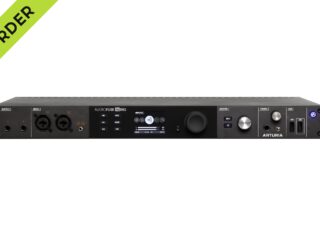
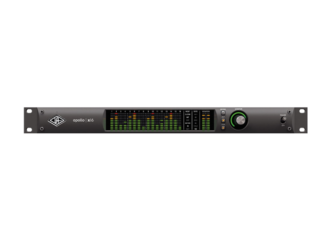
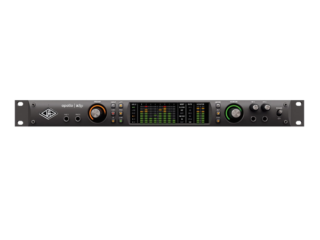
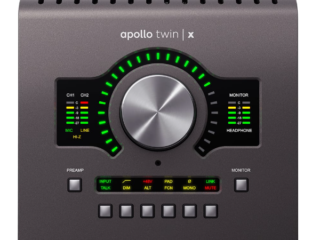
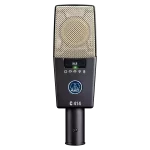
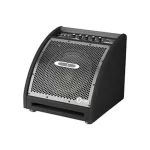
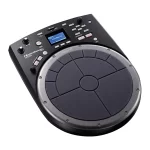
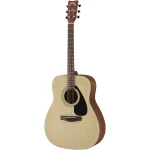
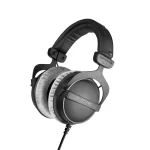
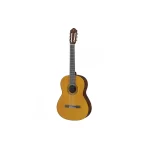

Reviews
There are no reviews yet.